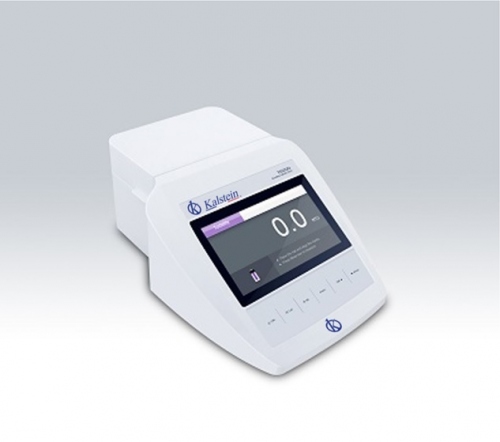A turbidimeter is a turbidity measuring instrument, which works on the basis of optical phenomena. Turbidity is an optical property that results when light passes through a liquid sample is dispersed by particles, resulting in a change in the direction of light passing through the liquid. The result will depend on the characteristics of the medium, such as size, shape, composition, and the amount of particles in the suspension.
Turbidimeters measure the intensity or attenuation of light that is transmitted through a liquid sample. The readings are reported in Nephelometric Turbidity Units (NTU), which correspond to the concentration of formazine that is used as a reference standard for measuring suspended solids in water.
Basically, these teams work under two methodologies
- Measurement of the intensity of light transmitted through a liquid sample.
- Measurement of the amount of light scattered and/or reflected through the liquid sample.
The use of turbidity as an indicator of suspended solids is well established, and is used from specific relationships between two parameters, as a correlation factor and the subsequent use for calibration of the equipment. This equipment has a variety of useful applications in different areas, mainly in water treatment. In the wastewater sector, they are used in settling tanks, and establish the next level of purification, or if pumped directly to natural tributaries; and it is also widely used in biology, to quantify the cells present in certain solutions, and in the observation of microbiological cultures for the manufacture of antibiotic drugs.
Types of Turbidimeters
- Portable turbidimeter: it is a comfortable and resistant measuring instrument, able to withstand the conditions that occur in the test field. The accuracy of this instrument is comparable to that of the laboratory turbidimeter.
- Laboratory turbidimeter: also known as table turbidimeter. They are usually used for water analysis from various sources. They are designed to provide measurements under controlled conditions.
- Process turbidimeter: designed to continuously measure turbidity on process lines and can provide real-time notification.
Advantages of turbidity measurement equipment
Today, turbidity measurement instruments are tools that thanks to technology provide advantages such as:
- Convenience: Commercial houses offer robust, airtight and reliable designs, easy to use, without the need for strict sampling protocols. With simple user interfaces, allowing multiple modes to be used in turbidity readings; with high-tech light sources, detectors and optical filter systems that improve the sensitivity of the equipment and minimize the amount of light lost. The way to use it is reduced to a few steps:
- Take a sample you want to analyze
- Place the sample in the turbidimeter cell holder.
- Press the button so that the turbidimeter measures turbidity and generates the reading.
- Measure Fidelity: The design technology of these equipment provides maximum reliability and precision in measurements. Whether in the field or in the laboratory, the technical specifications (range, resolution and accuracy) of these equipment ensure the reproducibility and repeatability of the data.
- Measurement control tools: Many of these devices come with a dual-focus system that directly performs reading conversion and accurately displays the total suspended solids. In addition, they include a menu that allows you to configure the complete data record, including date and time, operator identification, sample identification, mode, measurement parameters, calibration records, data transfer via USB port, language selection, among others.
From KALSTEIN, we offer you Portable Turbidity Meter (YRO 1841 series) and Table Turbidity Meter (YRO 1842 series). Which meet the design criteria in ISO 7027. They are measuring instruments designed to meet procedures that require high precision. For PURCHASE, SALE, or information about our products and PRICES, contact us on our website: HERE

